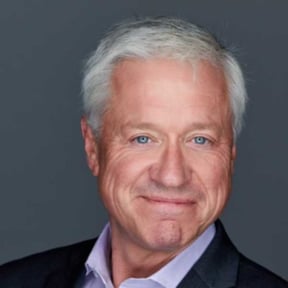Do You Have What it Takes to Kill the Project You Love?
Innovation, according to the economist Joseph Schumpeter, is all about "creative destruction." He was referring to the process through which new innovations (the creative part) displace established ways of doing things (the destruction part) and his work helped lay the foundation for the now-common idea of disruptive innovation.
However, there is another way in which destruction is as important as creativity in the process of innovation: the ability to be disciplined in killing R&D projects once it's clear (or should be) that they are not going to achieve the desired results. Failure to do so, as my co-author Rose Hollister and I wrote in our recent HBR article, Too Many Projects, is a sure recipe for what we call “initiative overload,” never mind the waste of resources.
I was reminded of this when I read Jeremy Kahn's wonderful October 17, 2019 article in Fortune Magazine "Inside James Dyson's Costly Decision to Kill His Electric Car." It's a must-read for anyone interested in the process of innovation and the management of technology. In it, Kahn chronicles the decisions that Dyson made, first to take a run at building an electric car, and then to call it quits.
The logic for Dyson to venture into the electric car market was quite solid. Opportunities for innovation always lie at the intersection of (1) emerging market needs, (2) evolving technical possibilities, and (3) available resources to undertake risky development efforts. At the time he launched the project in 2014/15, as Kahn chronicles, the situation looked favorable for Dyson on all three fronts:
The electric car market was just taking off. Established automakers were lagging far behind and Telsa had demonstrated that barriers to entry in the highly technical, capital intensive, and scale/scope driven automobile industry had fallen substantially.
On the technical front, Dyson's company already had mastered many of the technologies and capabilities necessary to build an electric car, ranging from deep familiarity with electric motors and batteries through sophisticated understanding of aerodynamics, to deep experience in the design and manufacture and assembly of complex plastic and composite parts.
Finally, on the financial front, Dyson's company was thriving, with 2018 revenues of $5.6 billion and operating profits over a $1billion. He saw an opening, decided the company had a good shot at it, and decided to take the risk.
Four years later, having invested about $2.5 billion, consumed four years of developmen time for hundreds of valuable engineers, and selected Singapore as the site for his factory, Dyson decided to throw in the towel. Key to making this decision was a hard-headed assessment of reality and a willingness to write off the investment and not fall prey to the sunk-cost fallacy, “It wasn’t the investment at all,” Dyson is quoted as saying in the article. “We’d already committed that.”
Critical to the making the decision was Dyson’s observation that competitors were prepared to be unprofitable, seemingly indefinitely. As Kahn puts it in the article, “Dyson says he focused on “the BAM”—the build and materials cost—of the car and therefore where he’d have to price it to earn an acceptable margin. What worried Dyson wasn’t the billions competitors were investing in EVs; it was their willingness to sell cars at a loss.”
Key too, was an organizational culture at Dyson that “learned quickly and failed fast,” rather than, as happens all-too-often, letting things drag on and expending more resources long after it’s clear it isn’t going to work. Again, from the article, “It’s heartbreaking,” said Stephen Courtney, Dyson’s concept director in the article. “But it is sort of the nature of working in research.” Dyson describes it as “the hardest decision we’ve ever had to make. So many designers and engineers have put so much effort into it, and it hadn’t seen the light of day.”
Hard to do, of course, but Dyson & Co still had the will to kill the project they loved. Do you and your organization?

Michael Watkins
Michael Watkins has spent the past two decades working with leaders, both corporate and public, as they transition to new roles, negotiate the future of their organizations, and craft their legacy as leaders. A recognized expert in his field, he ranked among Thinkers50’s top fifty management influencers globally in 2019. He is the best-selling author of The First 90 Days, Updated and Expanded: Proven Strategies for Getting Up to Speed Faster and Smarter, the globally acknowledged handbook for leadership and career transitions, which recently earned the accolade of Amazon’s Top 100 Leadership Books. He is Professor of Leadership and Organizational Change at the IMD Business School in Switzerland and previously served on the faculty at INSEAD and Harvard University, where he earned his PhD in Decision Sciences.